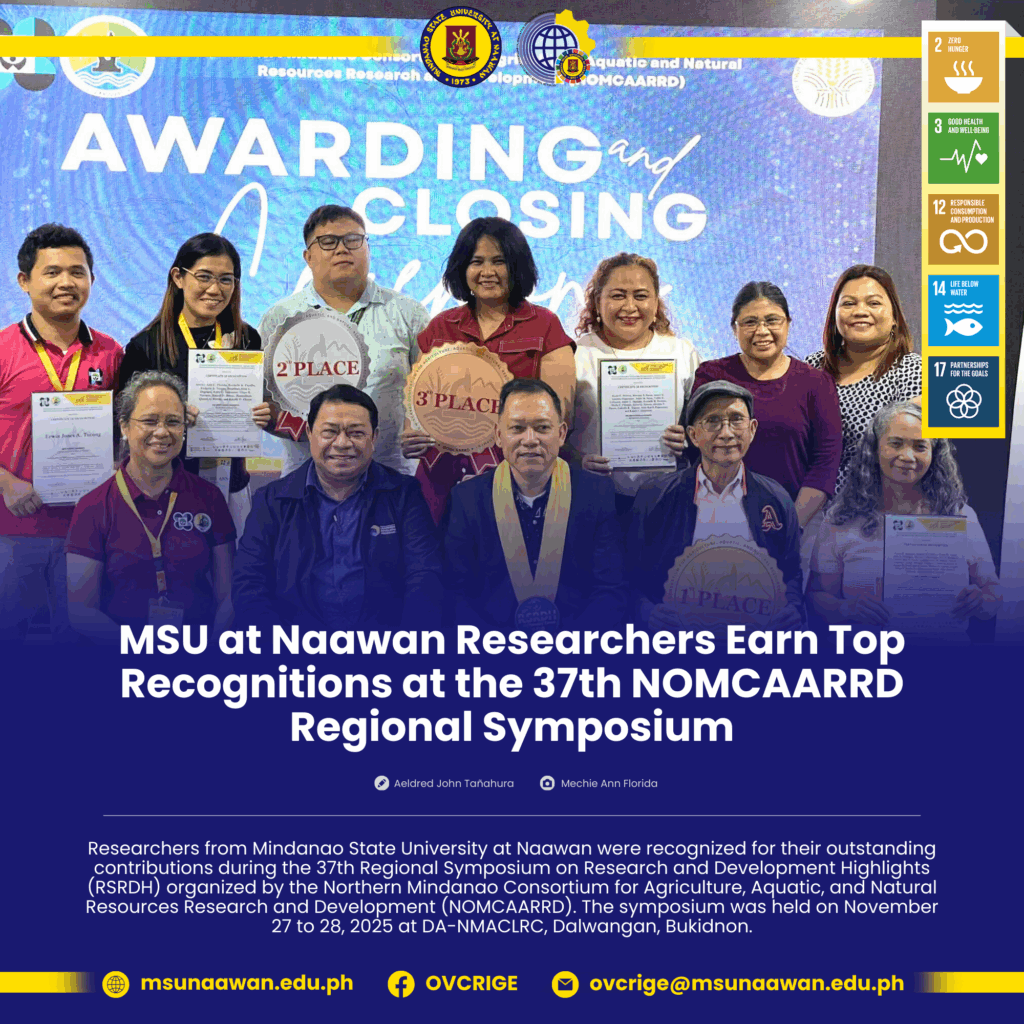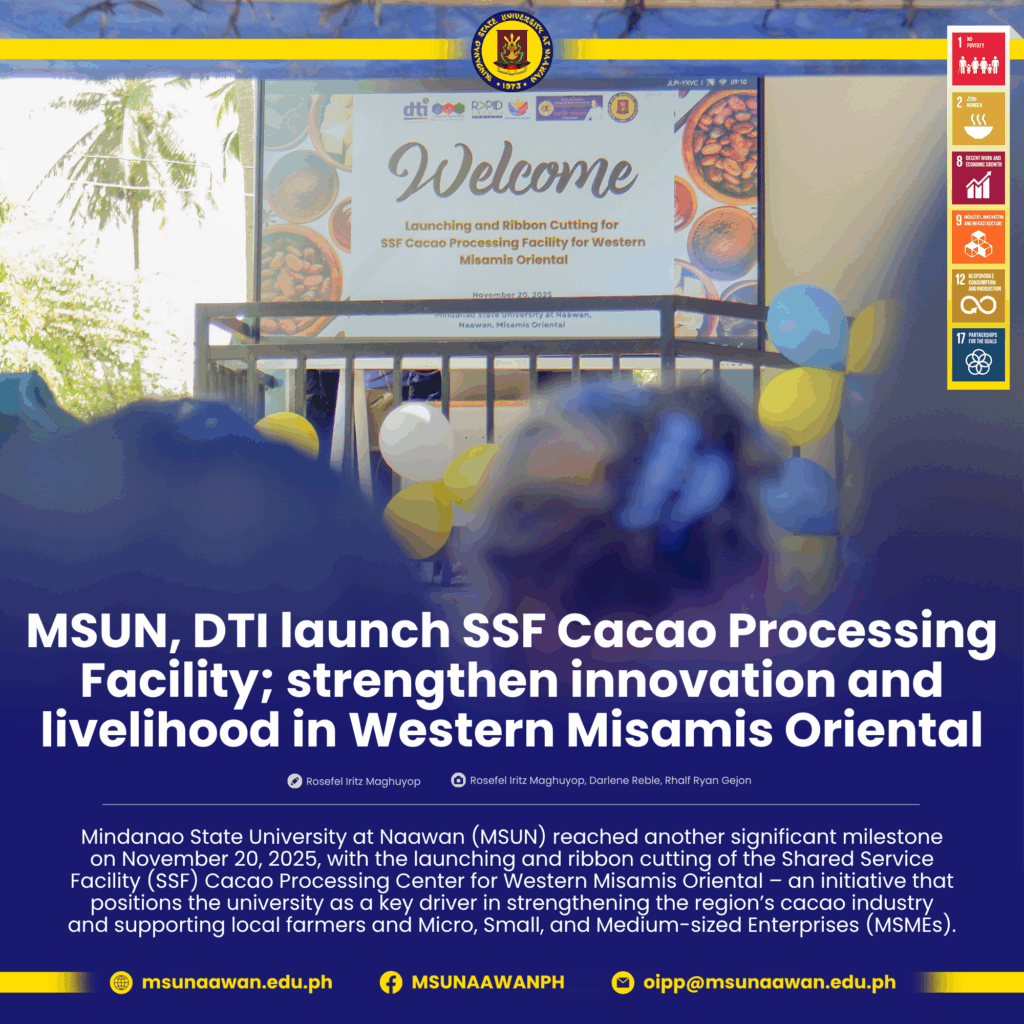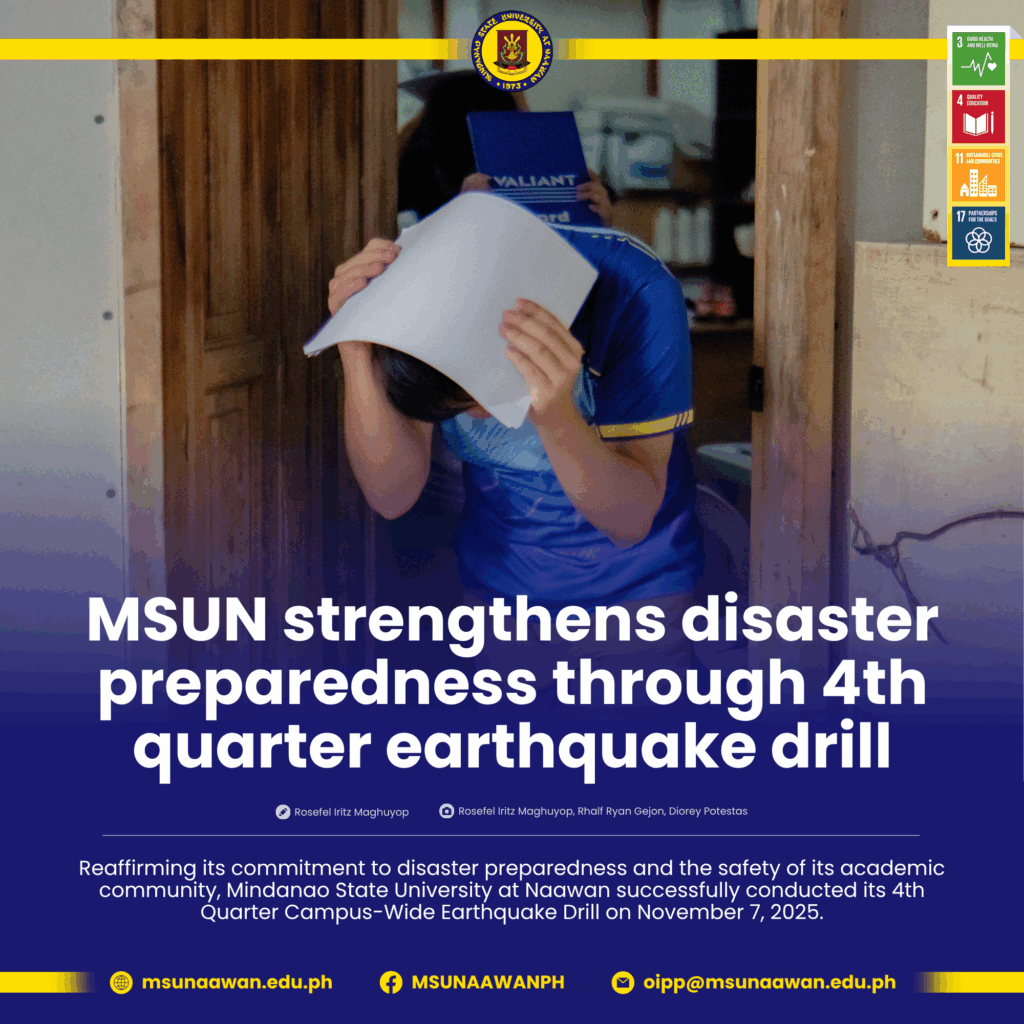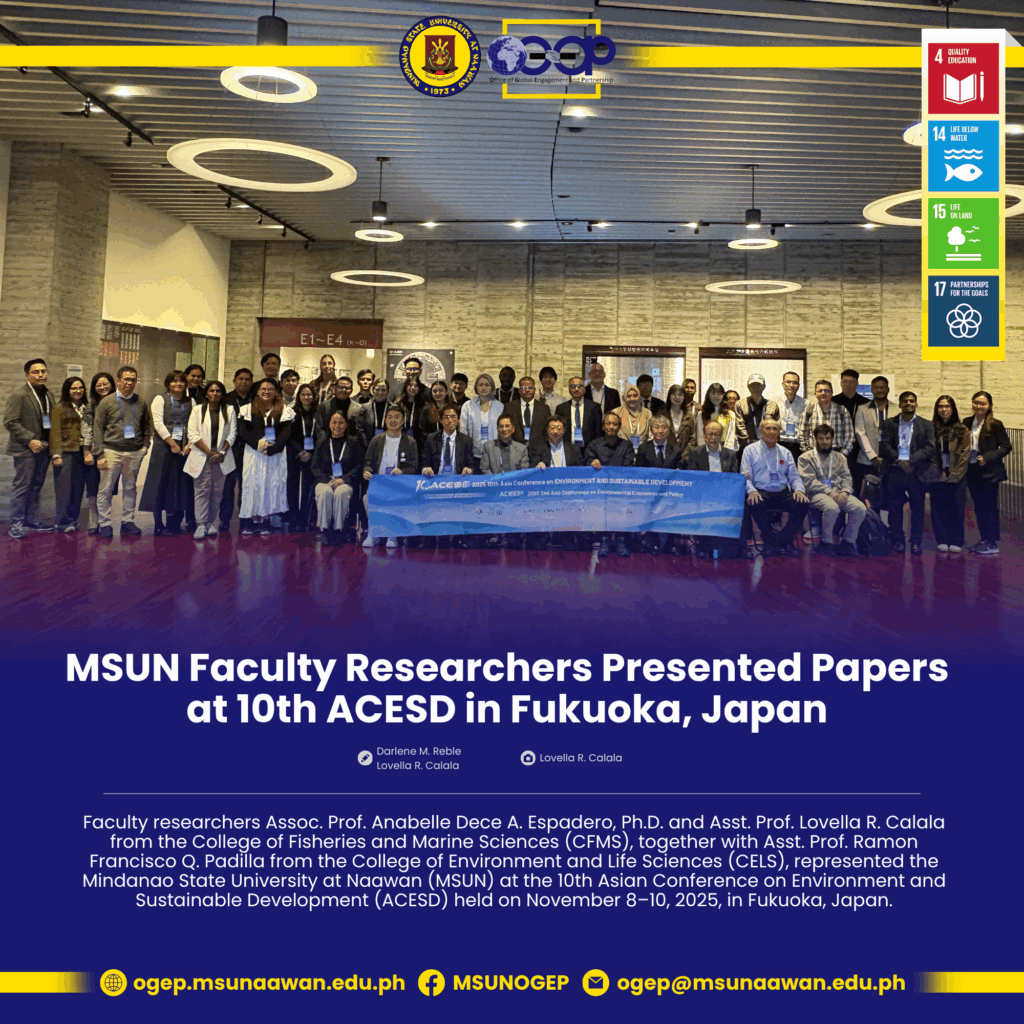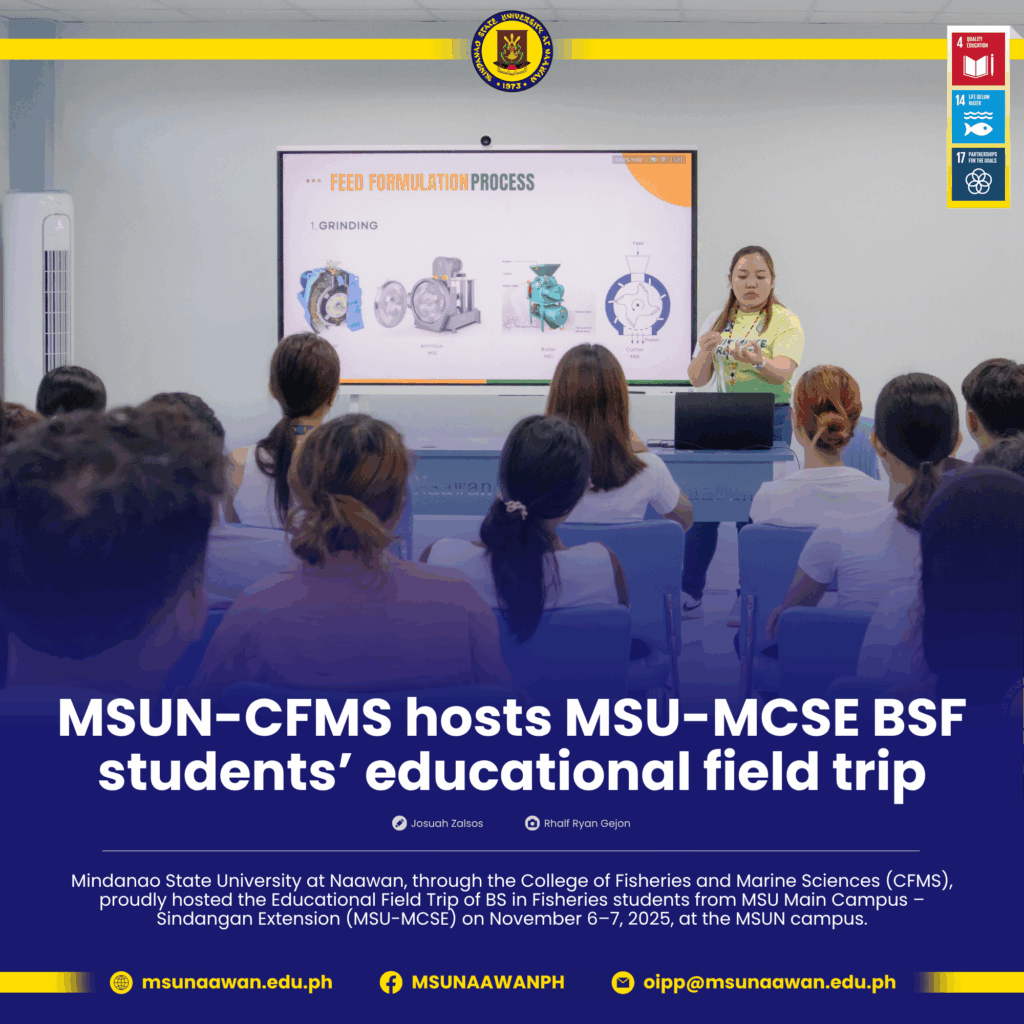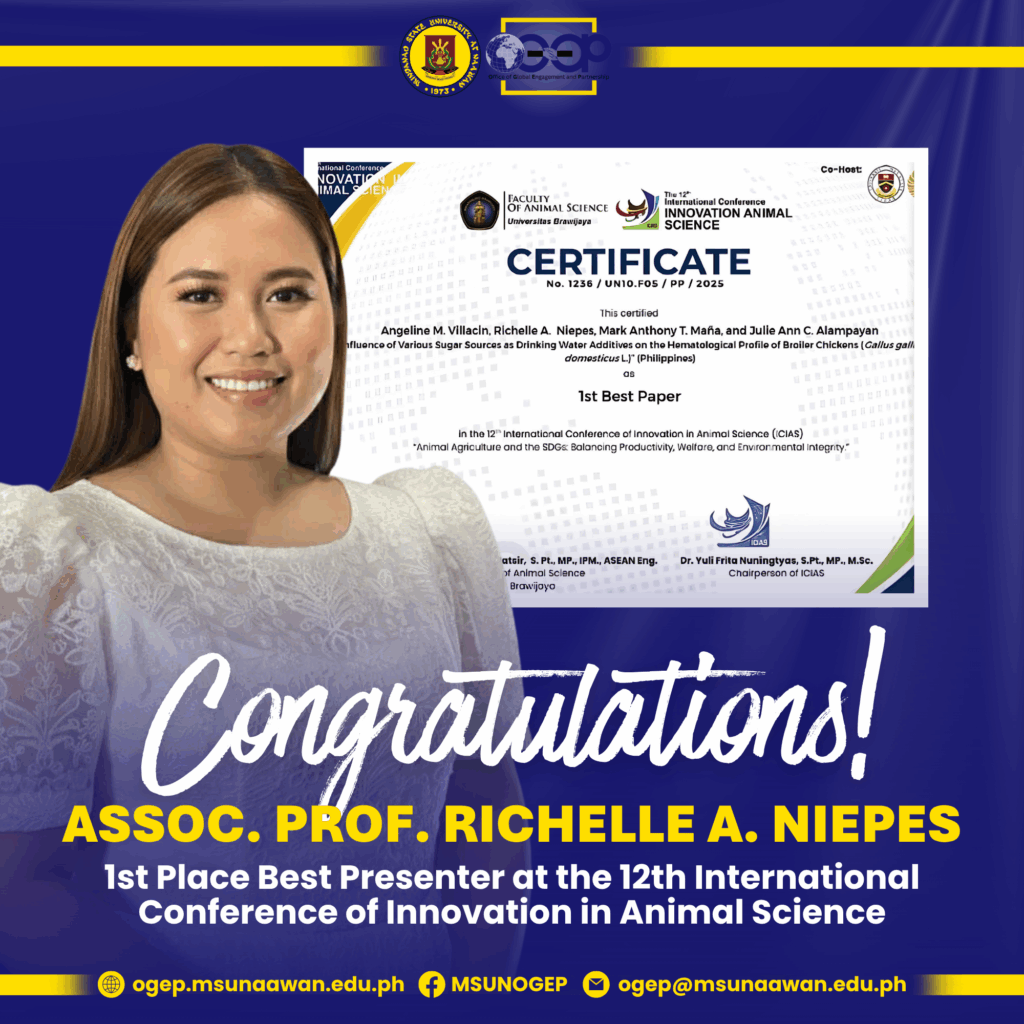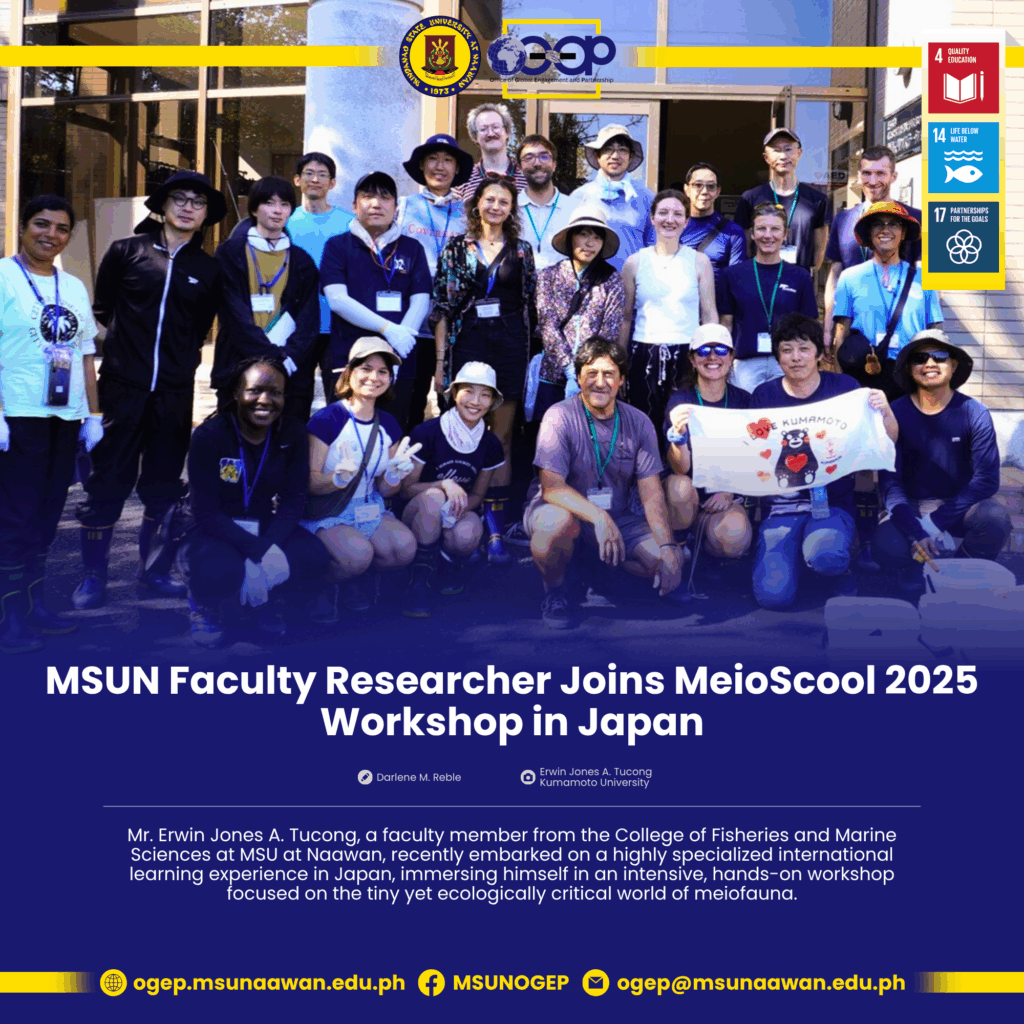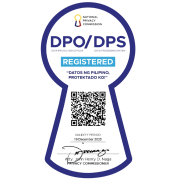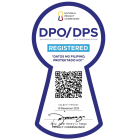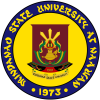Mindanao State University at Naawan (MSUN) reached another significant milestone on November 20, 2025, with the launching and ribbon cutting of the Shared Service Facility (SSF) Cacao Processing Center for Western Misamis Oriental – an initiative that positions the university as a key driver in strengthening the region’s cacao industry and supporting local farmers and Micro, Small, and Medium-sized Enterprises (MSMEs). Led by Project Leader Asst. Prof. Christian Fel Batoctoy of the College of Environment and Life Sciences (CELS), the project reflects MSUN’s expanding role as a hub for innovation, agriculture-based enterprise development, and community-centered progress. MSUN Chancellor Dr. Elnor C. Roa opened the ceremony with a message that underscored the value of synergy in public service. “This is a good example that when government agencies, the local government units, the provincial government unit, and the various department agencies in the government with the academe collaborating, participating to a common goal, 𝘮𝘢𝘩𝘪𝘮𝘰 𝘨𝘺𝘶𝘥 𝘢𝘯𝘨 𝘥𝘢𝘬𝘰 𝘯𝘢 𝘬𝘢𝘭𝘢𝘮𝘣𝘶𝘢𝘯 𝘱𝘢𝘳𝘢 𝘴𝘢 community [great progress for the community can truly be achieved] – and this is a very good example,” she said. Dr. Roa further emphasized MSUN’s commitment to transforming the facility into a center of research and innovation. “Because it is placed in a university, 𝘮𝘢𝘯𝘪𝘯𝘨𝘬𝘢𝘮𝘰𝘵 𝘱𝘶𝘥 𝘮𝘪 𝘯𝘢 𝘮𝘢𝘩𝘪𝘮𝘰 𝘴𝘪𝘺𝘢𝘯𝘨 research hub – 𝘮𝘢𝘬𝘢𝘩𝘪𝘮𝘰 𝘵𝘢 𝘶𝘨 research, 𝘢𝘳𝘰𝘯 𝘮𝘢𝘬𝘢𝘱𝘢𝘢𝘺𝘰 𝘱𝘢 𝘴𝘢 quality 𝘯𝘨𝘢 𝘢𝘵𝘰𝘯𝘨 𝘮𝘢𝘱𝘳𝘰𝘥𝘶𝘤𝘦 out of this shared facility [we will also strive to make it a research hub – where we can conduct studies that will further improve the quality of what we produce through this shared facility].” 𝘼 𝙁𝙖𝙘𝙞𝙡𝙞𝙩𝙮 𝘾𝙧𝙚𝙖𝙩𝙚𝙙 𝙩𝙤 𝙐𝙥𝙡𝙞𝙛𝙩 𝙁𝙖𝙧𝙢𝙚𝙧𝙨 𝙖𝙣𝙙 𝙄𝙣𝙙𝙪𝙨𝙩𝙧𝙮 The cacao processing facility, established under the Department of Trade and Industry’s (DTI) Shared Service Facility Program, is a response to a request from Deputy Speaker Cong. Yevgeny Vincente “Bambi” Emano to support and uplift the cacao industry in Misamis Oriental. DTI-10 OIC Provincial Director Ms. Jesusa M. Abear highlighted the strategic value of the project, noting that it aims to address long-standing challenges faced by cacao farmers in terms of processing and product value. “Why are we doing this? Because we believe in the potential of our farmers and the cacao industry in Misamis Oriental. This project was conceived to address a critical need among cacao farmers in Misamis Oriental… By bridging this gap, we aim to strengthen the cacao industry and position Misamis Oriental as the cacao capital of Region 10,” she emphasized. Western Misamis Oriental comprises 10 municipalities engaged in cacao farming, with 433 hectares cultivated by 499 farmers. Naawan alone contributes 121 hectares and 36,317 kilograms of the area’s total annual production of 126,921 kilograms of dried fermented cacao beans. Despite this abundance, many farmers are limited to selling raw beans at lower margins. The new SSF facility addresses this challenge by providing access to toll processing services that enable the production of higher-value products such as cacao butter and cocoa powder – commodities with significantly greater market potential. 𝘼 𝙎𝙩𝙖𝙩𝙚-𝙤𝙛-𝙩𝙝𝙚-𝘼𝙧𝙩 𝙃𝙪𝙗 𝙛𝙤𝙧 𝘼𝙧𝙚𝙖 𝘿𝙚𝙫𝙚𝙡𝙤𝙥𝙢𝙚𝙣𝙩 Located within the MSUN campus, the cacao processing facility is equipped with Php 1.73 million worth of industry-grade machinery, forming part of the project’s total cost of Php 3.9 million. It will operate as a toll processing center, allowing farmers and MSMEs to pay processing fees while retaining control over the marketing and distribution of their finished products. Its placement at MSUN ensures that the center will not only provide processing services but also serve as a platform for research, product innovation, and technical capacity-building for farmers, students, and micro-entrepreneurs. 𝙎𝙪𝙥𝙥𝙤𝙧𝙩 𝙁𝙧𝙤𝙢 𝘼𝙜𝙚𝙣𝙘𝙞𝙚𝙨 𝙖𝙣𝙙 𝙇𝙤𝙘𝙖𝙡 𝙇𝙚𝙖𝙙𝙚𝙧𝙨 The ceremony was graced by key national and regional partners who expressed unwavering support for the initiative. Messages were delivered by DTI-10’s Ruel B. Paclipan through Asst. Regional Director Ms. Almer R. Masillones; Mindanao Development Authority Northern Mindanao Area Head Ms. Lordelie Enjambre; and Department of Agriculture–Region 10 Regional Executive Director Mr. Jose Apollo Y. Pacamalan, represented by Mr. Dryan Anthony Illana. Naawan Mayor Hon. Dennis L. Roa also conveyed the municipality’s full support for the project. Deputy Speaker Cong. Emano, represented by Board Member Hon. Nancy S. Madjos, reaffirmed the national government’s commitment to agricultural and MSME development in the province. The launching event likewise gathered DTI-10 Technical Working Committee Chairman Mr. Ruben A. Vegafria, Senior Trades and Industry Development Specialist Ms. Judy Aclan-Tangkihay; Northern Mindanao Food Innovation Center Manager Ms. Phoebe Galeon; former MSUN College of Agriculture and Forestry Dean Dr. Renato Boniao and former DTI-10 Director Linda Boniao; and MSUN’s executive officials including Vice Chancellor for Academic Affairs Asst. Prof. Gergie A. Ambato, Vice Chancellor for Administration and Finance Ms. Rhoda D. Perpetua, Vice Chancellor for Student Affairs and Services Ms. Arleen B. Uy, Vice Chancellor for Strategic Planning and Initiatives Assoc. Prof. Frederick Cabactulan, DARES Director Dr. Aida D. Perpetua, CELS Dean Dr. Nonillon M. Aspe, CELS faculty and staff, the CDRRM team, security personnel, and other MSUN personnel. Farmers, MSME owners and managers, municipal agriculturists, and representatives from various government agencies also participated in the event, signifying the strong multi-stakeholder support behind the facility. 𝘼 𝙎𝙝𝙖𝙧𝙚𝙙 𝙑𝙞𝙨𝙞𝙤𝙣 𝙛𝙤𝙧 𝙋𝙧𝙤𝙜𝙧𝙚𝙨𝙨 The inauguration of the SSF Cacao Processing Facility marks a significant leap forward for Western Misamis Oriental’s cacao industry. It is a testament to what collective effort – anchored on trust, shared vision, and inclusive development – can achieve. With MSUN serving as the home of this state-of-the-art facility, the university not only strengthens its role as an academic institution but also emerges as a catalyst for enterprise growth, agricultural resilience, and rural innovation. As this facility begins its operations, it is set to empower farmers, uplift local communities, and contribute to a more robust cacao value chain – paving the way for Misamis Oriental to become a leading player in the region’s agricultural economy.

